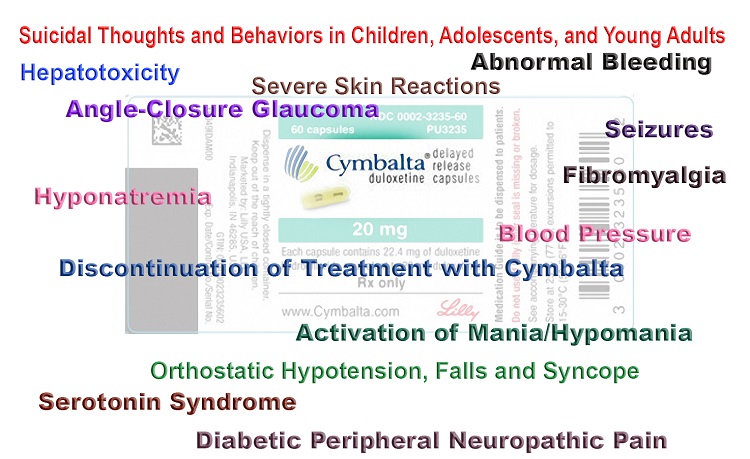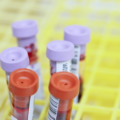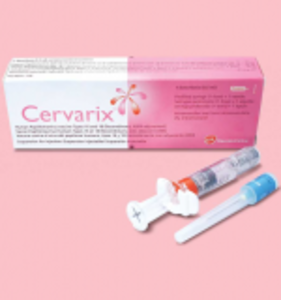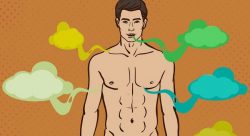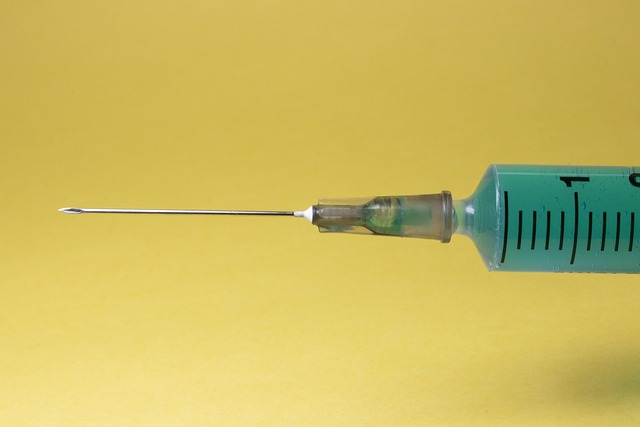Frequent Infections, Antibiotics, and Asthma
As I’ve reflected on my current health challenges, I’ve come to the realization that I need to head back in time to my earliest years. Like many kids born in the early 90s, I was the first to receive a slew of vaccinations that were previously never given to children. I suffered from frequent “earaches” that led to multiple courses of antibiotics before kindergarten, and by the time I reached middle school, I was taking yearly courses of antibiotics for all sorts of things: colds, sinus infections, acne. It was around this time that I was also diagnosed with exercise induced asthma. I remember almost passing out in a lacrosse practice in 7th grade, and before I knew it, I was put on Advair (daily inhaled steroid) and was hitting the albuterol 2 or 3 times before a workout. My allergies also raged during this time.
Anxiety and Doctor Prescribed Benzodiazepine
I started getting increasingly anxious in early high school. I remember getting what I now know are symptoms of a panic attack in late middle school. Though part of this was due to the fact that I was hiding my sexuality (and hiding it well), I also realize that I had been slamming my adolescent body with drugs, vaccinations and the standard high sugar American diet for 14 years at that point.
My anxiety caused sleeping issues and I was placed on Ambien when I was 16. When I was withdrawn from that, the anxiety got worse (I know now it was Ambien withdrawal), and I was finally sent over to a psychiatrist. After listening to my description of panic attacks, she placed me on Klonopin, one of the most potent benzodiazepines on the market that should never be used for more than a few weeks. She told me to take up to four a day (an insane dose) and that like a diabetic, I needed GABA enhancement, and I would have to take these for the rest of my life.
At 17, I was buzzing on a benzodiazepine every day. I remember that it actually felt quite good and erased all worry. But then I began to experience one of the most terrifying side effects of long-term benzodiazepine dependence: I was getting dementia! I couldn’t remember things for tests or quizzes no matter how hard I studied. When I brought this up to the psychiatrist, she assured me that a little amnesia was a common benzodiazepine side effect, but that the benefits outweighed this. Essentially, giving a teenager dementia outweighed him having anxiety.
Benzodiazepine Withdrawal and Repeat Concussions
When I decided I needed to come off the benzodiazepine after taking it for a year, her instructions were to taper over one week and then jump. Now, this was 2010, and the internet was alive and well at that point. Upon doing just a little bit of research, I knew this woman was insane. All recommendations were that benzodiazepines needed to be tapered over the course of many weeks if not many months. I found a benzo support group online that became my lifeline for the next 4 months as I gradually weaned myself off the drug with the support of my parents and a new primary care doctor. Throughout this time, the one drug that I actually credit with saving me is marijuana. Without it, I’m not sure I would have done as well as I did getting off the drugs and then staying off of them.
I went right off to college that fall, which in retrospect was a miracle. I struggled a lot that first year. I was experiencing post acute withdrawal syndrome (PAWS) from the benzodiazepine and almost flunked out. I gradually improved but was still dependent on nightly marijuana to go to bed. In 2014, I finally stopped smoking weed and was 100% drug free.
That summer, I ended up getting my first concussion, though I suspect I had many others growing up as I played soccer and lacrosse. As if one wasn’t bad enough, I somehow ended up getting another the next summer in 2015 when I was at the beach and hit my head on a car door. I was later told by a neurologist that once you have a concussion, it becomes significantly easier to get a second, and then a third, and so on.
I had long suffered minor symptoms from benzodiazepine withdrawal that never went away, like tinnitus in my ears, an inability to take GABA drugs without reactivating withdrawal symptoms, and other neurologic symptoms that always made me feel “different.” The concussions added to this complex situation and I would have what I can only describe as seizures during times of stress or intense workout. It felt like my brain had electric current running through it.
Around this time, I also received the first injection for the Gardasil vaccine. I never followed up with the rest of them because of how off I felt that the first few days after getting it. Only recently have I learned about the severe damage that Gardasil can cause.
By 2016, I had been doing a paleo/plant-based diet and felt generally well, but the symptoms from both benzo withdrawal and my concussions persisted. In 2017, I started using CBD oil, and I found that it relieved a lot of the symptoms. It calmed my brain down significantly. I also began using Truvada (HIV medication) during this time as PreP. The one issue that never went away throughout all of this was my anxiety and panic. I was prone to situational panic attacks that felt like my fight/flight system was in total chaos.
A Complete Crash with Tinidazole
Despite feeling okay in 2018 and most of 2019, my whole world was turned upside down again in the fall of 2019. I contracted some sort of stomach bug that wasn’t going away, and my doctor placed me on a drug called Tinidazole, the sister drug of Metronidazole (Flagyl). I haven’t felt the same since that day.
The symptoms came on almost immediately. Dizziness, depression, increased anxiety, neuropathy in my hands and arms. I became convinced that I had ALS because my hands weren’t working right. It was also unlike me to ever assume something as terrible as a fatal diagnosis, but my brain was in total disarray.
Two weeks after taking the Tinidazole, I had to go back on antibiotics for wisdom teeth removal. Immediately after the surgery, I went into one of the most horrendous panic attacks of my life, in part because I had been injected with novocaine about 20 times. I had to be wheeled out of the doctor’s office because the panic had been so bad. Looking back now, there is a similar case study in Thiamine Deficiency Disease, Dysautonomia, and High Calorie Malnutrition.
Things only got worse. By the end of the penicillin, my body was in a total spiral. I began having daily panic attacks that I can’t even describe. My body temperature was low, my fight/flight system was in disarray, I was depressed, I couldn’t think clearly. There were nights when I wouldn’t sleep at all and be in total fight or flight mode. I now know that I was going through Tinidazole toxicity that had gradually gotten worse over a few weeks. Combined with the penicillin, it was a recipe for disaster.
The strangest symptom that has come out of this experience is hypoglycemia. My blood sugar is tanking to dangerously low levels during the day unless I am extremely diligent about eating. There have been a few times that I have almost blacked out. This isn’t a common symptom of Metronidazole/Tinidazole toxicity, but I don’t know where else it could have come from.
Where I Am Now
I’ve improved a bit, but I’m still having symptoms like dizziness, hypoglycemia, altered mental state, neuropathy and a total dysfunction of my fight/flight system.
Looking back at my long and complicated history, I’ve discovered a few things in my research:
- Early and frequent antibiotic use is linked to anxiety and depression
- I ate A LOT of sugar throughout my life and my thiamine stores were probably always being hit hard and my mitochondria have probably been fighting this battle my life
- The benzodiazepine and Ambien have caused deep alterations to my nervous system/GABA receptors that became less noticeable with time but will never fully heal
- Concussions cause a cascade of effects that damage mitochondria function and lead to other semi-permanent neurological issues
- Truvada (PreP) also harms mitochondria
- Tinidazole plummets your thiamine
Thiamine Deficiency and Problems With Paradox
I’d like to start Dr. Lonsdale’s protocol for high-dose thiamine, but I encounter painfully difficult paradox symptoms. I have tried to start with a low dose (less than 10 mg) twice now, and always end up having to stop because it gets so bad. The “heart attack” and “seizure” symptoms are simply too frightening and I’m not sure what’s actually going on in both my brain and heart. I’d like to find a functional doctor that could possibly work with me to measure what’s going on when I take thiamine.
I’m also in the process of working with doctors to run tests on my hypoglycemia issues.
The only other thing I’ve considered is a fecal transplant. Since I’ve been on so many antibiotics, I’m convinced that some of my issues may stem from altered gut microbiota.
Lots of people see improvement from Metronidazole/Tinidazole toxicity over the course of 6-12 months. But unless I can take action, I suspect my thiamine issue will remain.
We Need Your Help
More people than ever are reading Hormones Matter, a testament to the need for independent voices in health and medicine. We are not funded and accept limited advertising. Unlike many health sites, we don’t force you to purchase a subscription. We believe health information should be open to all. If you read Hormones Matter, like it, please help support it. Contribute now.









